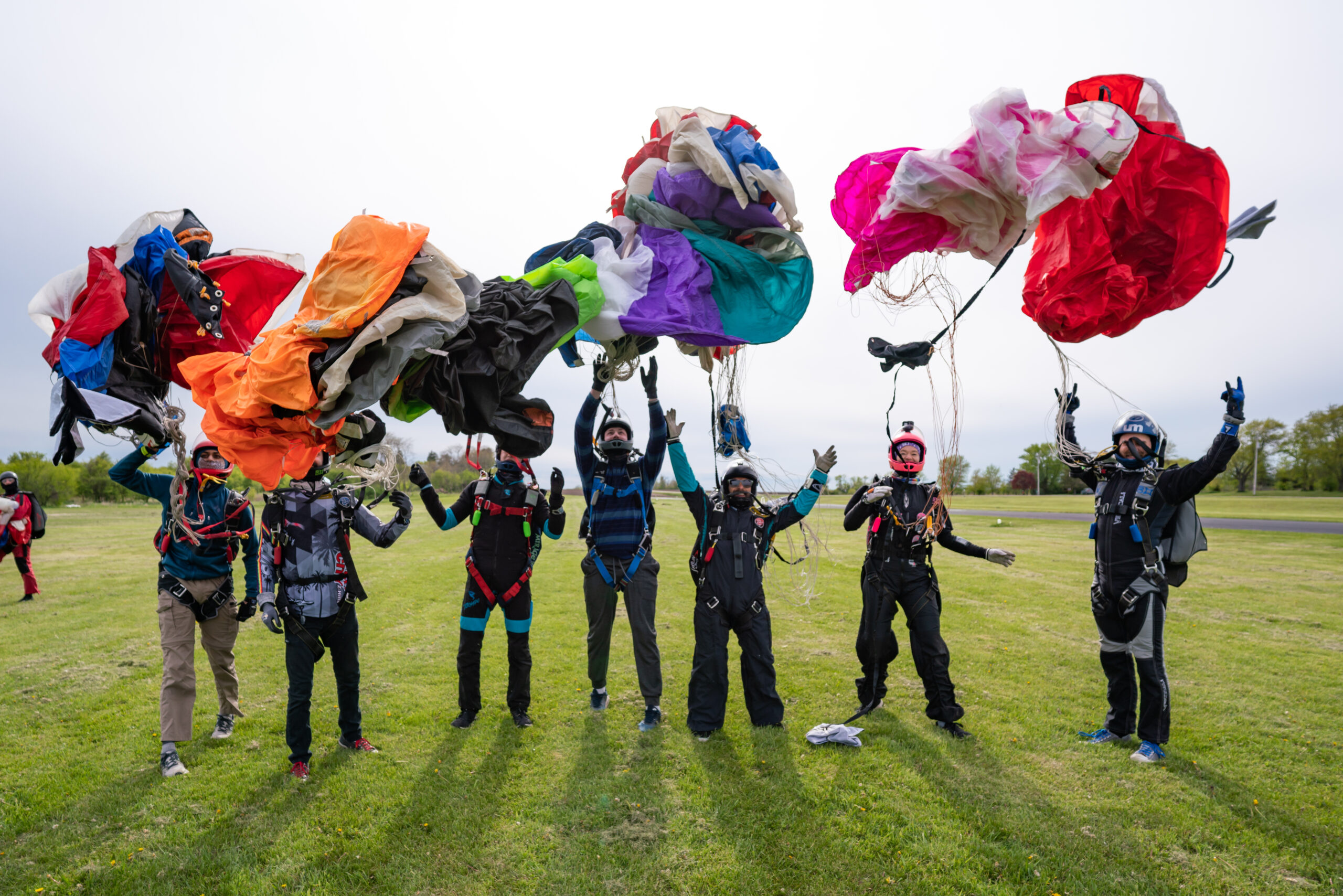How do you become a licensed skydiver?
So, you’ve heard of tandem skydiving and you know someone who has done it but what the heck is a skydiving license? How does one learn to skydive, become licensed or become a professional skydiver? Well, it’s actually a lot more accessible than you might think.
So, what are the minimum requirements for beginning a skydive licensing program? First, you must be 18 or older and you must weigh less than 230lbs. You should be reasonably fit and in good health. Beyond that, you just need desire, free time and some expendable cash.
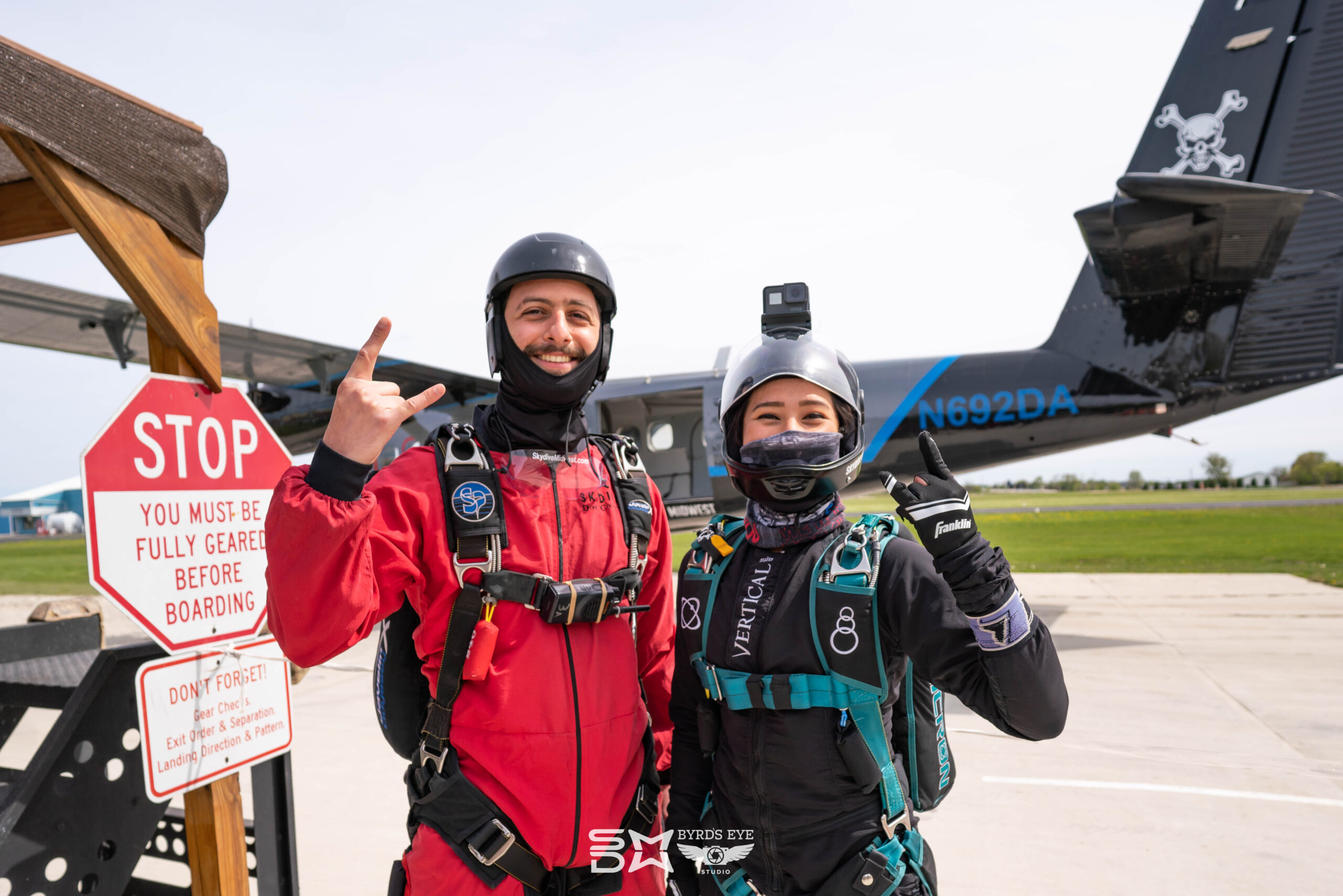
The United States Parachute Association (USPA) has a very structured and proven licensing program that has helped over 40,000 people become licensed skydivers. There are approximately 70,000 skydivers worldwide and counting.
So, you can get licensed, but is it dangerous? Yes. Of course, it’s dangerous. You’re jumping out of an airplane and falling towards the earth at 120mph. Skydiving is dangerous, riding a motorcycle is dangerous, playing football is dangerous, skiing is dangerous, horseback riding is dangerous. It’s a dangerous world and it’s full of fun things to do that are all varying degrees of dangerous. On average, skydiving is about as dangerous as any other extreme sport. Skydiving can be done successfully by almost anyone, but it’s just not everyone’s thing and that’s ok. You can stay inside watching Netflix and scrolling facebook all day if you want to, we don’t judge.
If you decide skydiving is for you, the first step is: call your local skydiving center. If you want to know how to choose a reputable place check out their blog 10 tips for a better skydiving experience. Schedule a ground school. The class is about 4-6 hour long depending on the size of the class and the aptitude of the students. In it you’ll learn about the equipment, aircraft procedures, exit & freefall, canopy flight, malfunctions & emergency procedures and landings. The basics. Then you’ll need to choose the skydive licensing program that is right for you. Your instructor will make a recommendation for either Accelerated Tandem Progression (ATP) or Accelerated Free Fall (AFF).
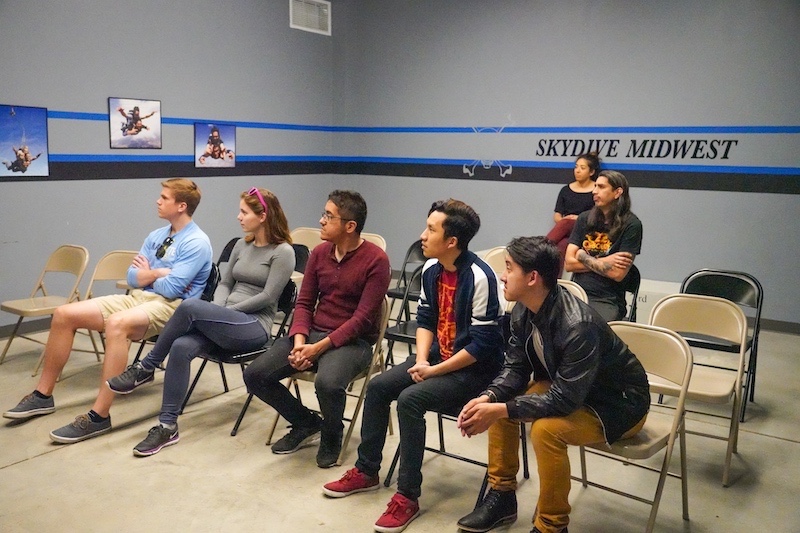
Accelerated Tandem Progression (ATP) is our recommendation for most people. In this program, your first 2 jumps will be tandem skydives. You’ll be attached to your instructor. It’s a great way to get acclimated to the extreme act of jumping out of an airplane. If you get overwhelmed, your tandem instructor has got your back, literally. It also means you’ll have an instructor with you during canopy flight. So, they’ll be able to give you detailed feedback while helping you learn to fly a proper pattern and land your parachute. Landing a parachute softly and with accuracy is one of the most difficult skills to master, so having and instructor giving instant feedback from a first-person perspective is invaluable.
Once you finish your two tandem jumps, we recommend a training session at an indoor wind tunnel for one-on-one instruction with an approved trainer. Here you’ll be able to master the skills needed to remain stable in freefall and replicate the motions needed to deploy your parachute while maintaining stability. This 10-minute session is equivalent to more than 10 skydives worth of freefall time so it is THE FASTEST and MOST EFFICIENT way to acquire the skills needed to increase the speed with which you progress in the program. It makes you safer and helps you become licensed MUCH, MUCH faster.
After that, you’re on to “Supervised Solos”. This means you’ll now be wearing your own parachute and will no longer be attached to an instructor. Your instructor will guide you through a series of training jumps to work on specific skills. They will give you hand signals to adjust your body position and communicate in freefall. You will have a radio attached to you to provide assistance with the landing pattern which you’ll now be doing on your own. After a total of 25 jumps, (including your 2 tandem skydives) and a combination of “supervised solos” and actual solos (without any instructor) you should accumulate all the freefall and canopy skills needed to take a written test and submit your USPA A License Proficiency Card to get your skydiving license! The USPA license is recognized anywhere in the world!
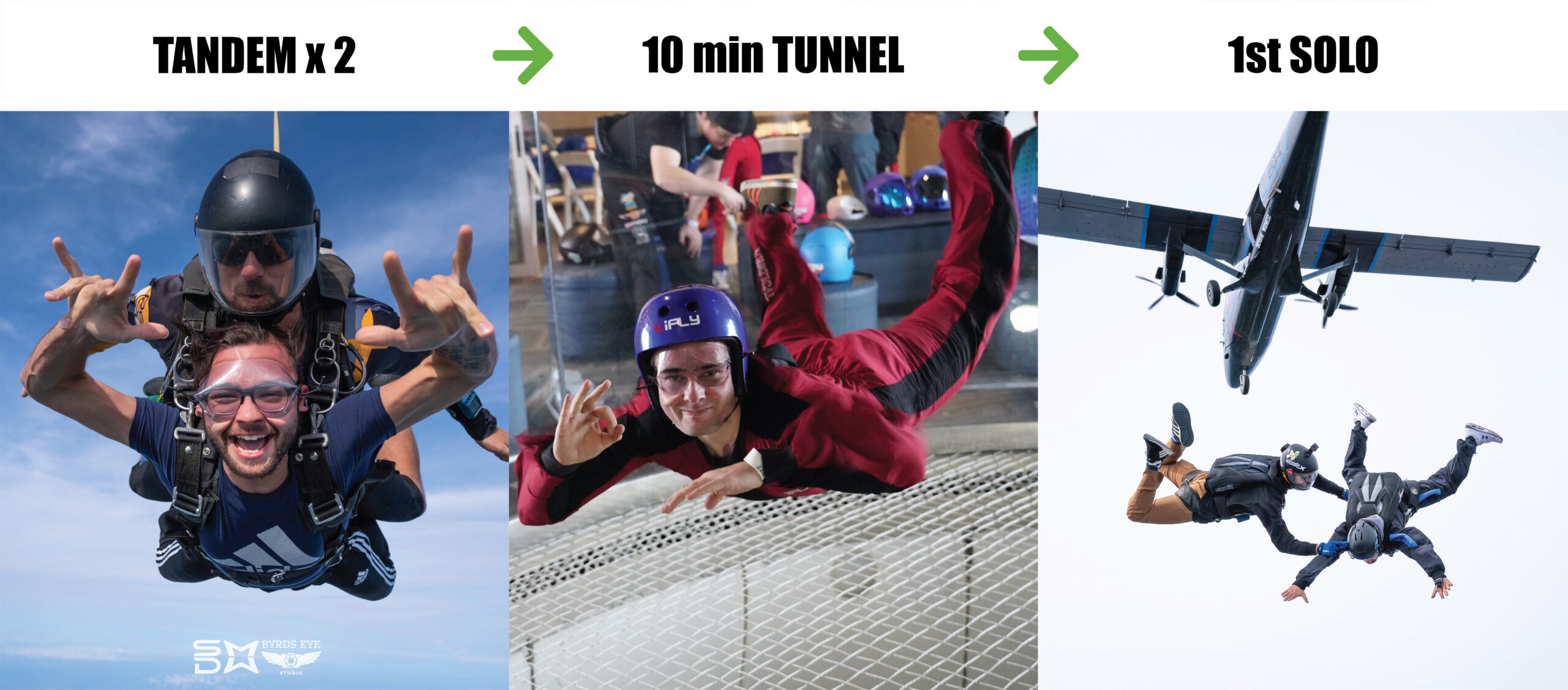
ACCELERATED FREEFALL (AFF) Your other possible option for licensing is AFF. There are NO tandem skydives required in this program. Your first 2 skydives will be “Supervised Solos” where TWO Instructors will accompany you in freefall. They will not be attached to you but they will be holding on to you for stability and giving you hand signals to help correct your body position and give instruction. Once you deploy your canopy, you will be guided via radio for canopy flight and landing. You’ll be doing all the piloting yourself.
Before your instructors can let go of you in freefall we recommend training at an indoor wind tunnel, same as with ATP. Once you finish that, jump 3 will be your first “release” dive where the instructors will let go of you in freefall for the first time. If all goes well, you will only need one instructor going forward and the program continues down the same path as ATP to achieve your skydiving license.
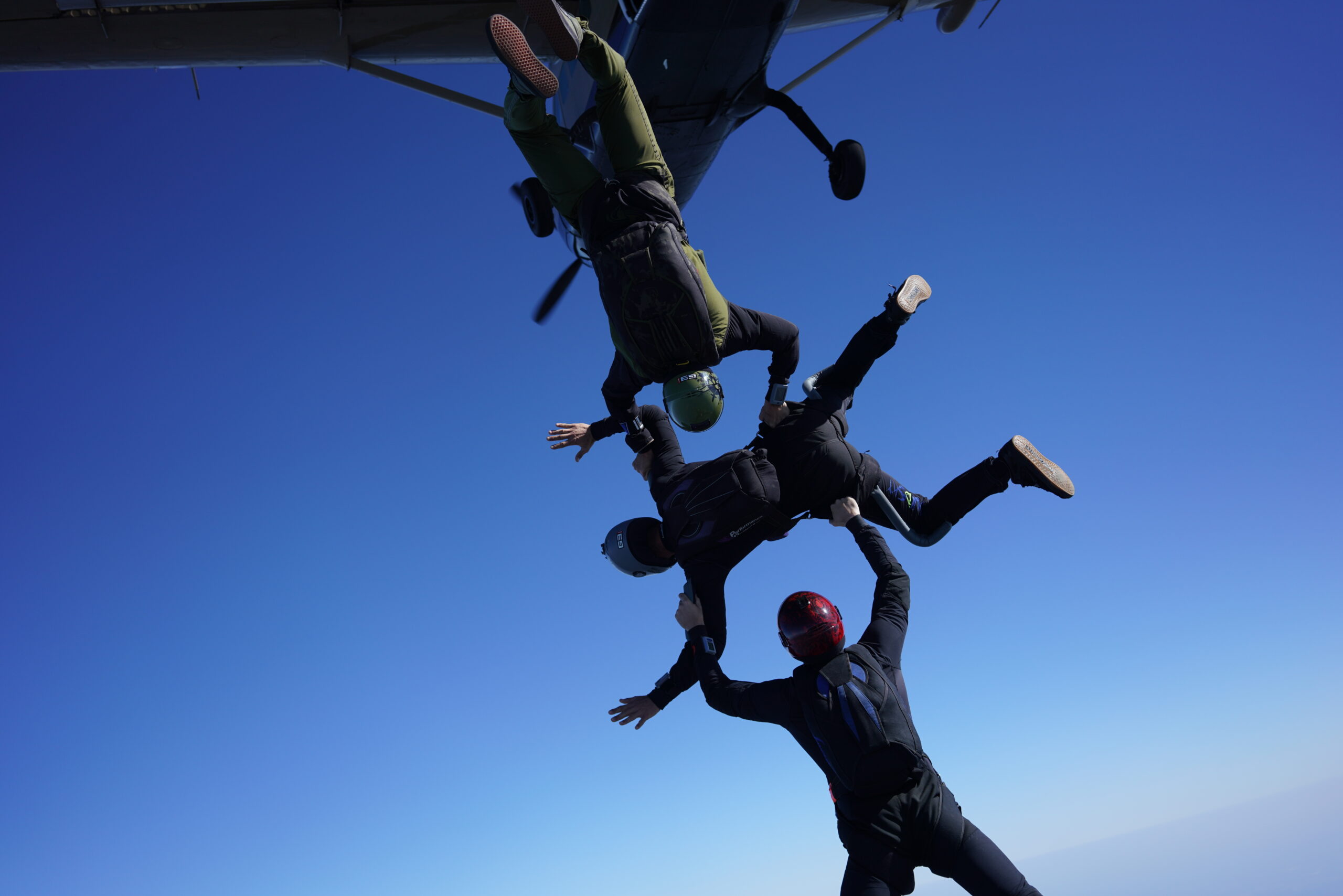
It’s more cost effective.
You only need one instructor throughout the program instead of two, which makes it less expensive.
You can become licensed faster.
Because you only need one instructor, it’s easier to get you up in the air. We have a lot of students and not many instructors so the fewer instructors needed on a single jump, the faster and more frequently we can get you in the air.
The hands-on canopy training.
With the instructor right behind you, they can give detailed and precise feedback from first-person perspective, in real-time. This makes learning how to land much faster, easier and safer.
The pass-rate is higher.
The two tandem skydives take some of the stress off. Knowing there’s an instructor there in case you need help tends to help students feel less overwhelmed. As a result, they tend to perform better when they get to solo jumps. Repeating a jump can be expensive so having a better pass-rate for each level makes ATP even more affordable in the long run.
Your instructor is there if you have a parachute malfunction.
Having to deal with a parachute malfunction on one of your first 2 skydives is unlikely (1 in 700 jumps results in the need of a reserve parachute deployment) but it could happen. It’s a stressful and tall order for someone who has never jumped out of a plane before. If this happened in ATP, your instructor would do the procedures for you. In AFF you would be responsible for handing the malfunction on your own. You’ll have the proper training and you should know what to do, but a first skydive is overwhelming enough without dealing with a malfunction. ATP takes some of the pressure and responsibility off of you on your first 2 skydives while you get acclimated.
Once you get your skydiving license you are free to start skydiving with other people. You can learn to fly in different orientations, build formations, join a team and train for skydiving competitions or work towards becoming a tandem instructor yourself. The possibilities are endless and you’ll make new friends in a community that is unlike any other. For more information on skydiving disciplines check out our blog Skydiving Explained.
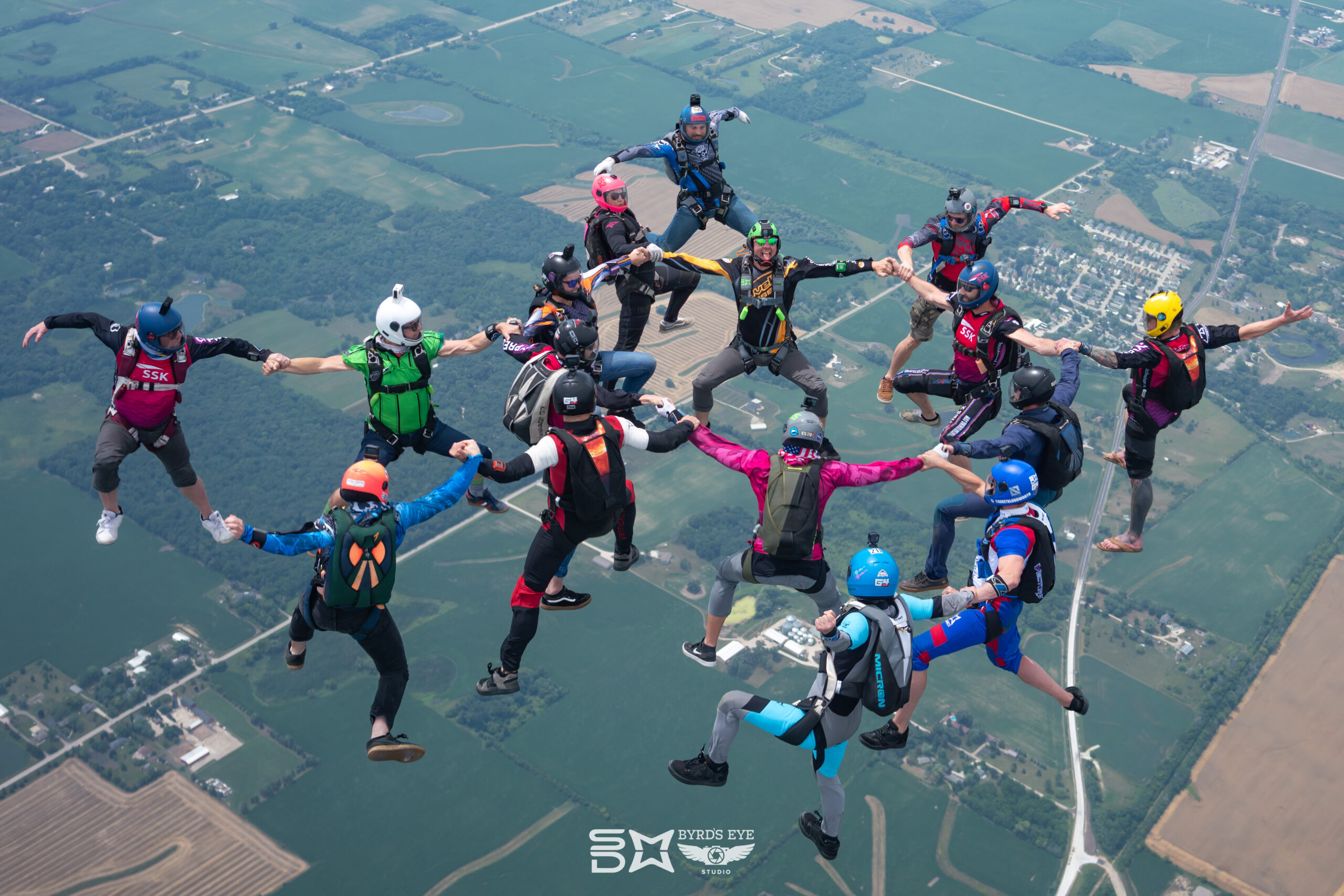
For information and pricing on skydiving licensing programs, jump-by-jump, check out our website and read more. We even have some great discounts if you choose to prepay for the program in full. You can save 10 or even 15%. On average, across the industry, it costs between $3000-4000 to become licensed. That may sound like a lot but if you consider you’re getting 25 skydives out of it, that’s only about $120 per jump. And the best part is, once you become licensed, skydiving gets a lot more fun and a lot more affordable! Licensed jumpers can skydive for just $25 a jump! Getting licensed is a structured and totally achievable thing for most people. We make dozens of new skydivers every summer and you could be one of them!
Learn more about our skydiving licensing programs -- pricing, jump schedules, FAQ and more.
